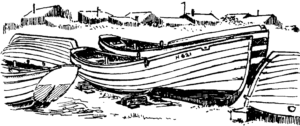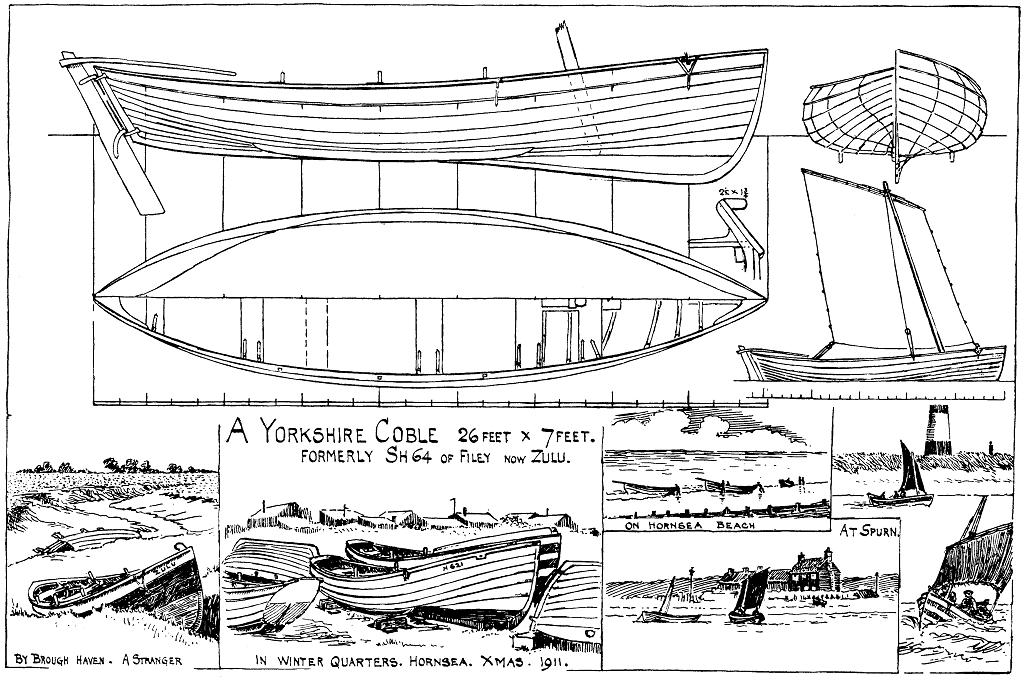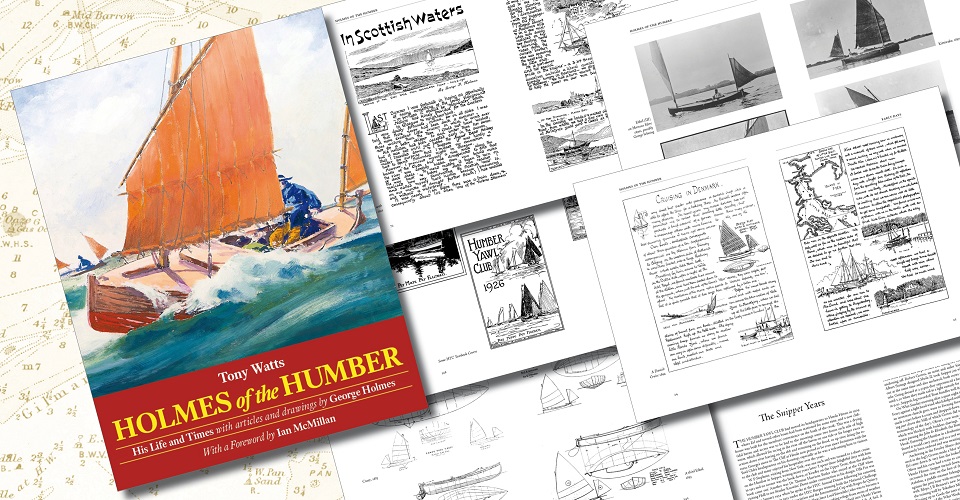 Perhaps the most curious craft which is found in use by the fishermen round the coasts of Britain is the Yorkshire coble [writes George Holmes in 1912]. Along with the Sheringham boat—referred to and described in a former number—this type is used for crabbing by the men who work from Spurn Point, and it is hardly necessary to add that those who use it swear by it and consider it far more suitable than its smaller rival. From Spurn northwards it is found in increasing numbers. At Withernsea and Hornsea about equal proportions of cobles and crab boats are found, but at Bridlington a crab boat is quite a rara avis, and such a thing has probably hardly ever been seen at Flamborough, Filey or Scarborough.
Perhaps the most curious craft which is found in use by the fishermen round the coasts of Britain is the Yorkshire coble [writes George Holmes in 1912]. Along with the Sheringham boat—referred to and described in a former number—this type is used for crabbing by the men who work from Spurn Point, and it is hardly necessary to add that those who use it swear by it and consider it far more suitable than its smaller rival. From Spurn northwards it is found in increasing numbers. At Withernsea and Hornsea about equal proportions of cobles and crab boats are found, but at Bridlington a crab boat is quite a rara avis, and such a thing has probably hardly ever been seen at Flamborough, Filey or Scarborough.
The Hornsea cobles are usually of the square-sterned variety, as are also most of those used from Flamborough, but at Bridlington, Filey and Scarborough the sharp-sterned boats are generally in a majority.
Of late years the large cobles which “keep” at Bridlington have run into the square-sterned type increasingly. Some of these craft—open save for a fore deck with small cuddy below—are of quite large size, up to 35 x 10, but, of course, such boats are quite unsuitable to be beached stern first under oars, as the smaller ones are. However they sit up on the mud very nice and square when they are aground there or at Whitby. Some particulars were obtained from a coble bought at Filey last Spring (1911) by Donald Massey and sailed round by him to the Humber.
He filled in the keel—it required 4 in. or more to make it a straight line, and widened and shortened the rudder, but in the absence of a competitor of similar type it was impossible to judge of the effect of these alterations.
As the lines show, the form is an easily driven one, and obtains its lateral resistance by the deep forefoot and the long rudder. The ballast, stones or shingle in bags, is dumped overboard before a landing is made if any sea is running.
The rig is almost invariably a rather low peaked square-headed dipping lug sail, with many rows of reef points, and upon occasion all of them are used. It is secured to the yard by “rovings” instead of a lacing, and is hoisted by a heavy and well greased rope tie and a tackle hitched outside the weather gunwale. The mast has a considerable rake aft, which has a tendency to make the sail more “lifting” in running before a hard wind.
The lug is frequently used aback, the tack being hauled over to the weather bow, but as the “tie” is set fore and aft in the mast the sail can be set on either side, and is usually hoisted so as to be “full” on what is likely to be the long tack. The oars work on pins (thowls) with a ring and consist of two parts, the loom and the wash or blade, nailed and lashed together. The loom is very heavy inboard to balance the outboard portion. The Hornsea men frequently carry a jib, the “short mast” (2-reefed sail) being used as a bowsprit.
Some of the Bridlington trawling cobles, a fairly large type of perhaps 30 ft. length, set a lug mizzen in addition to the jib, which is pretty generally used at that port in combination with a rather higher peaked lug—about the same angle as the luff of jib—which it can clear.
Another variety of coble is the so-called “herring mule,” which usually carries four men and a “cauf “ (calf) coble. These are very big boats and are generally even more gaudily painted than their smaller sisters.
The coble with her sharp flaring bow and flat afterbody is probably a “cross” from the Norway yawl and the Norwegian pram. Like these two types she is built with very wide streaks on grown (fitted) timbers and similarly to the latter type she is built on a “Ram” plank, not on a keel. The Flamborough cobles are mostly used with no keel, merely a forefoot and side draughts (bilge keels). For getting up the beach at the north and south landings, a steam-driven capstan is used, the boats passing over short hard wood planks placed transversely. On the flatter beach at Filey wheels with low bent axle are used, and for getting the boat on to these lightness of construction is very essential. The first job when a new (?) coble comes to Hornsea is to fit her with a keel and keel band, as the boats there are run up or down the beach on “skeats” (? skids). One of these can be seen under the white coble in the centre sketch, and the writer’s earliest boating experiences had to do with carrying these wickedly heavy concerns round as the boat was moved up or down the beach.


